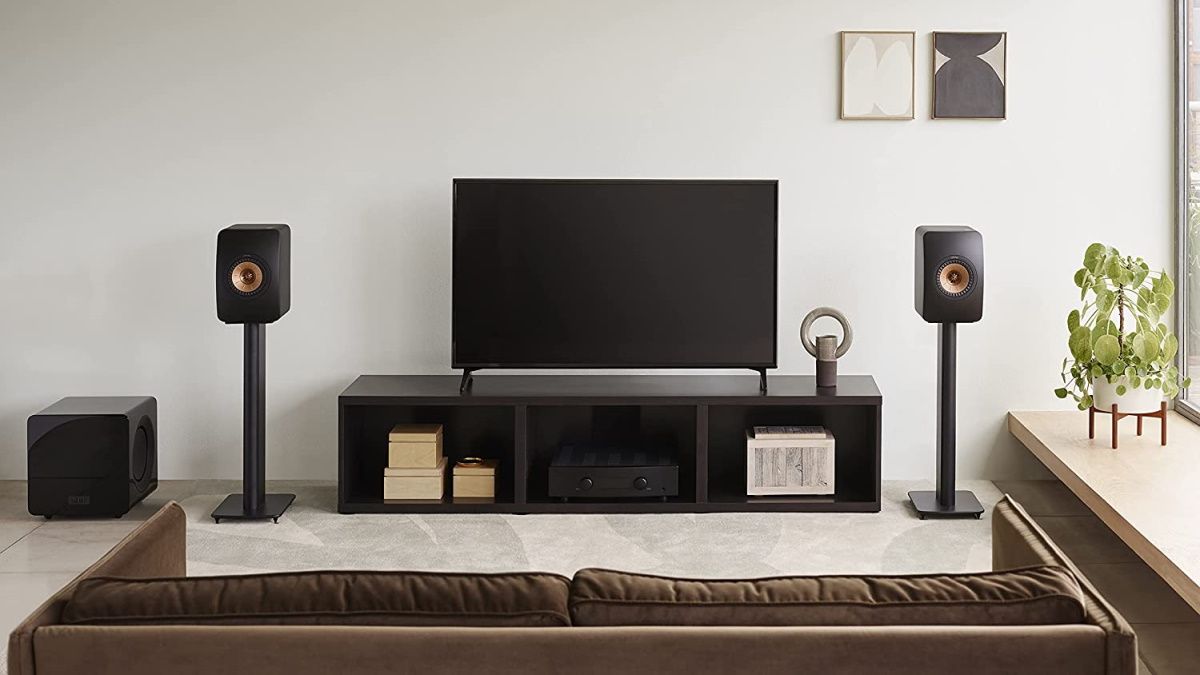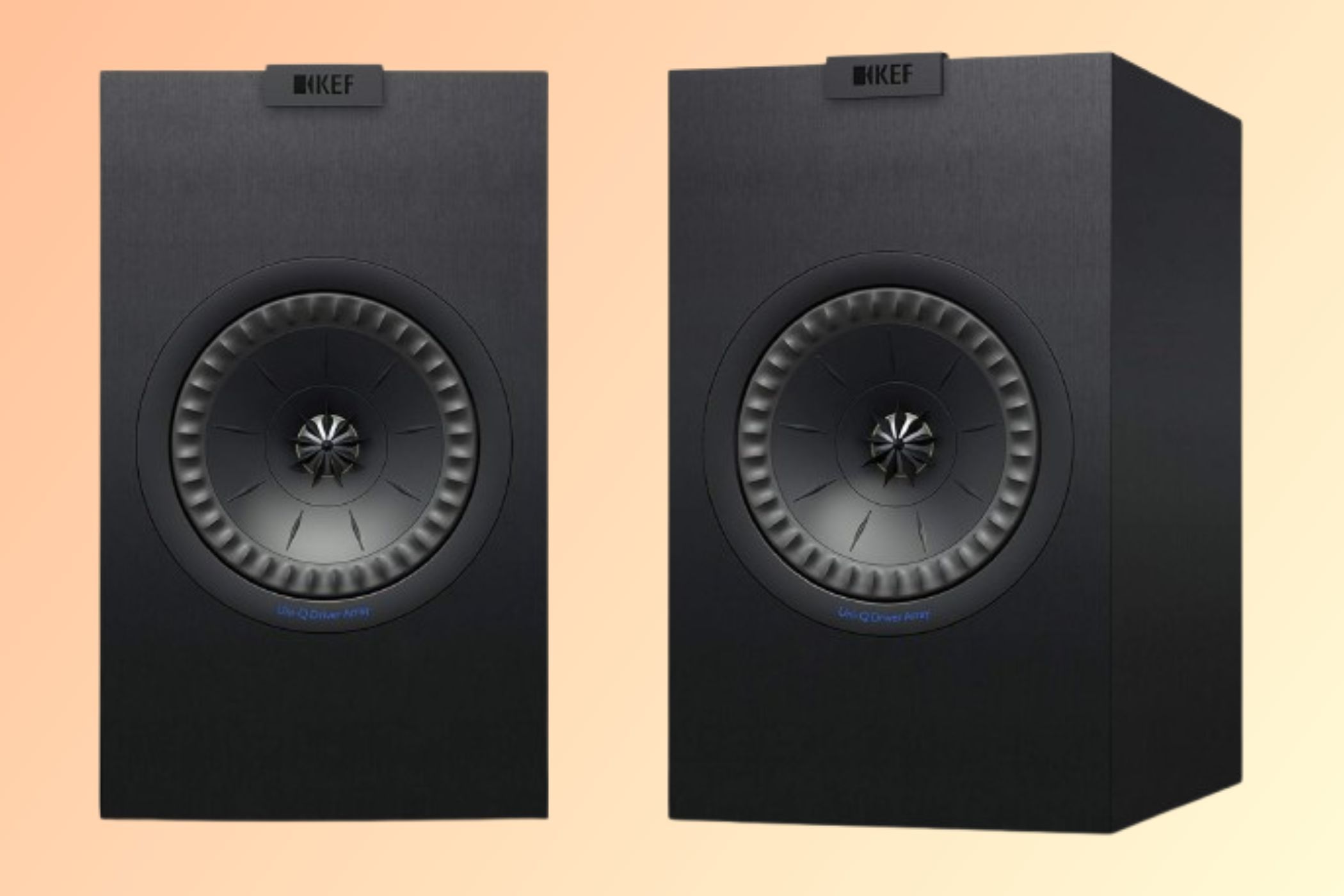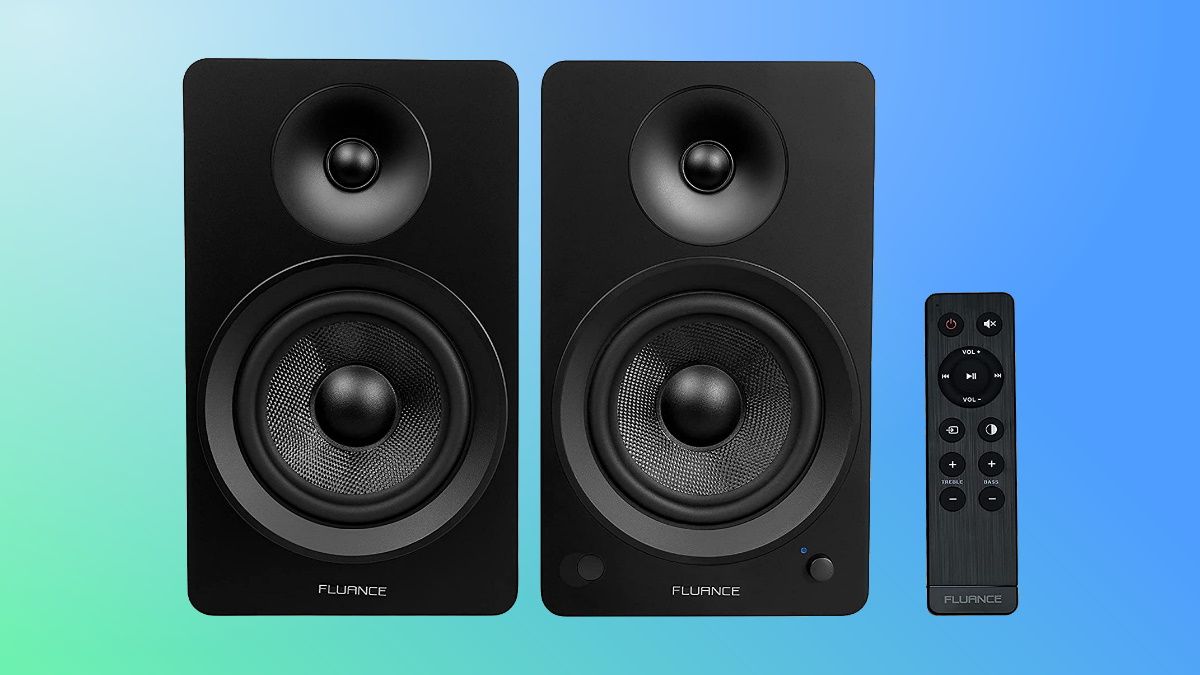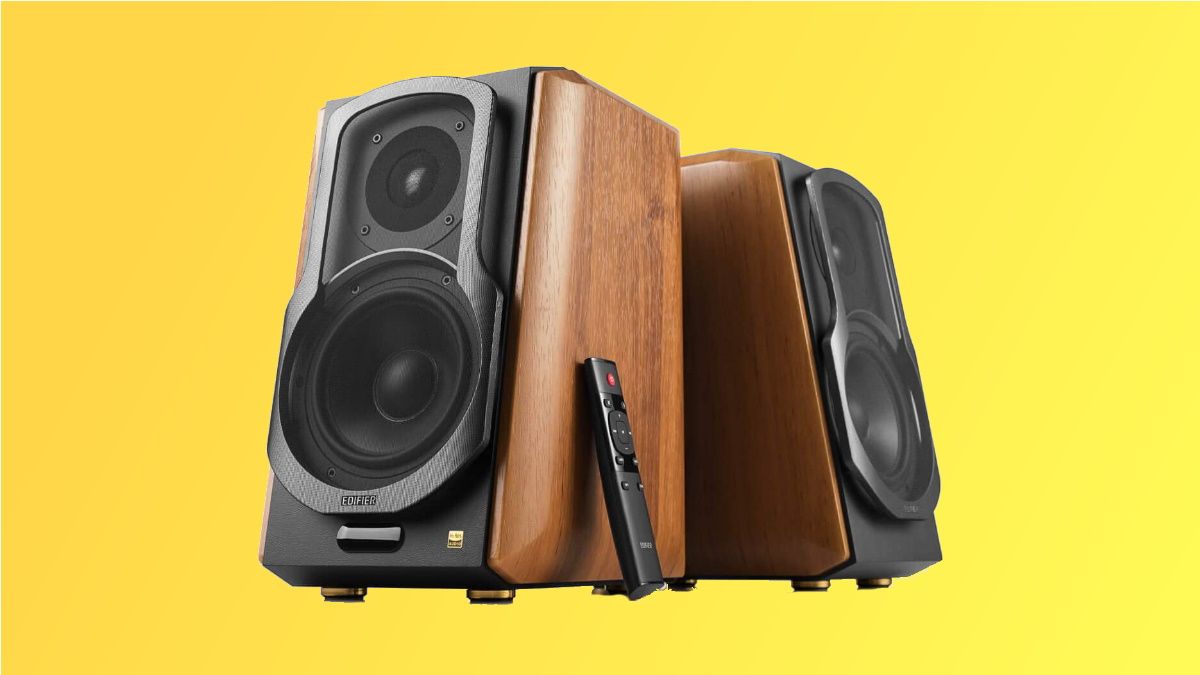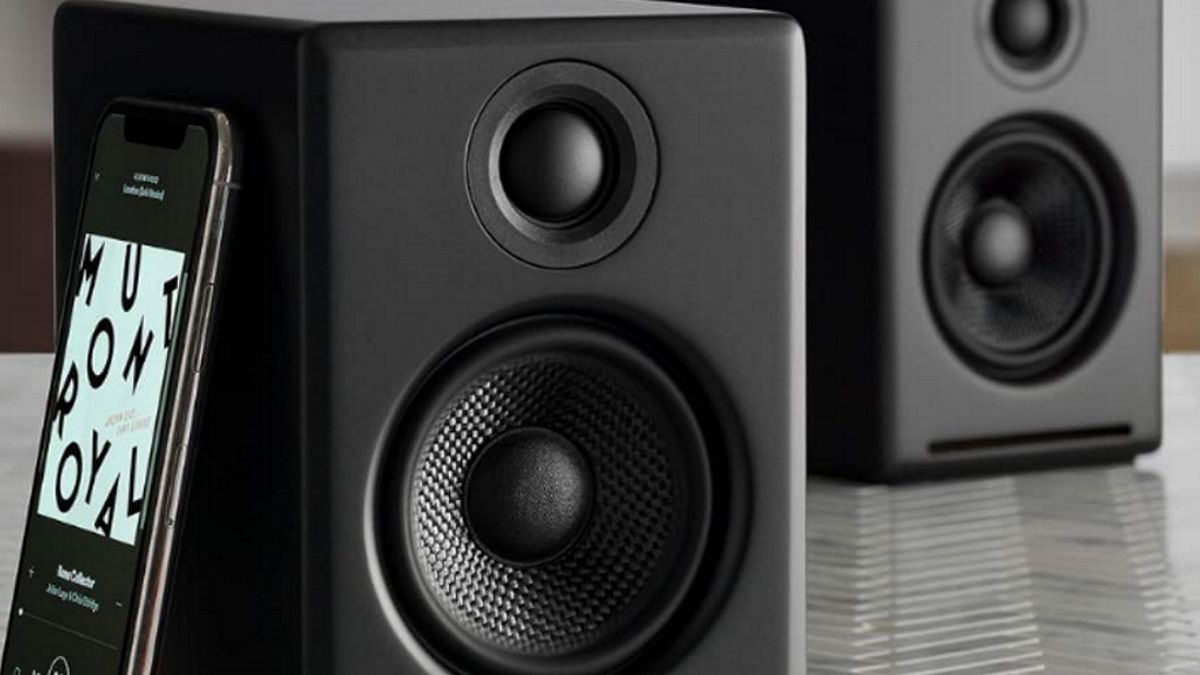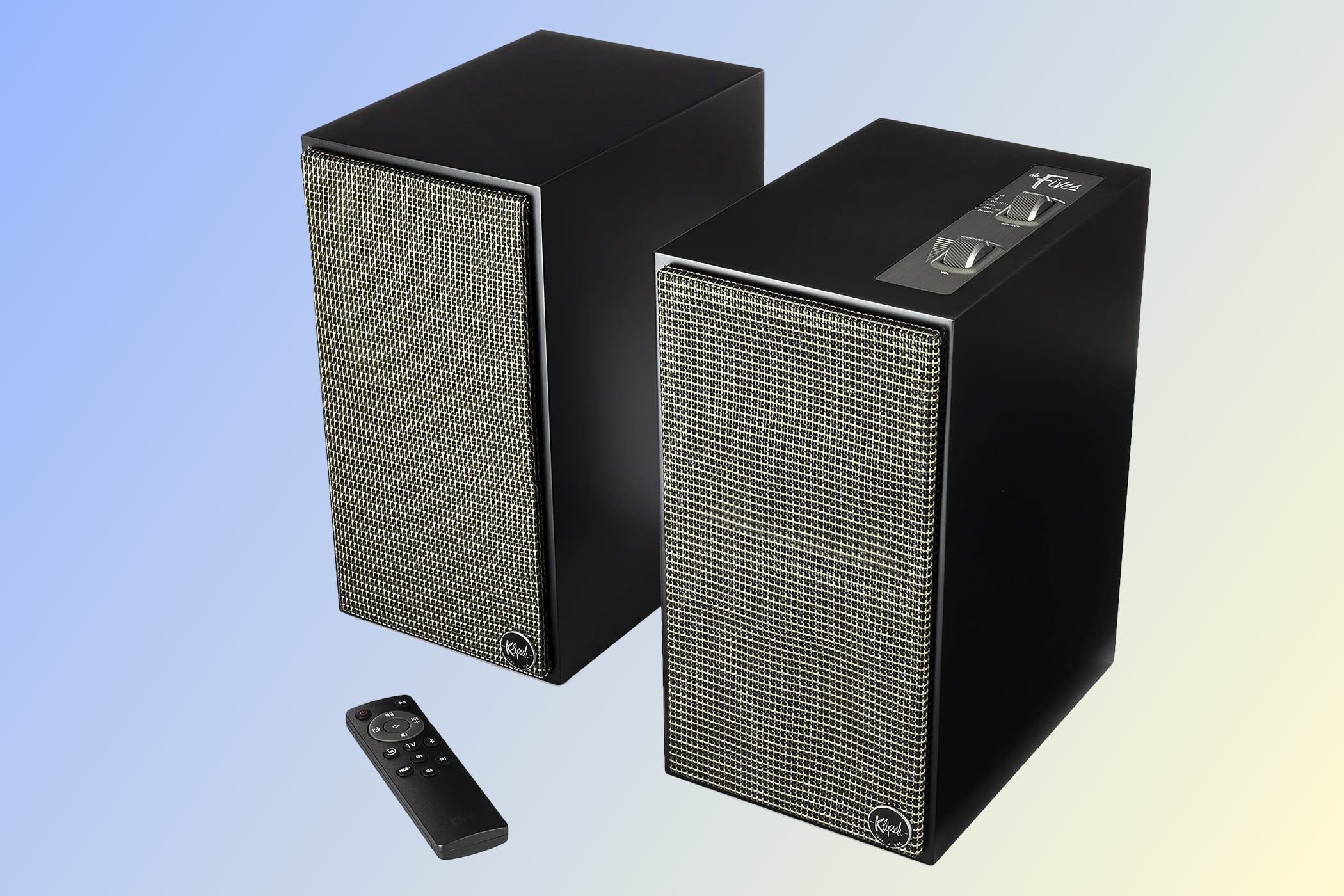Whether you want to fill your home with music or improve your home theater setup, high-quality bookshelf speakers are a must. Not sure which bookshelf speakers are right for you? These are the best.
UPDATE: 10/22/2024
We’ve reviewed our recommendations and updated our picks for the best overall and best budget bookshelf speakers.
What to Look For in Bookshelf Speakers in 2024
Whether you’re buying bookshelf speakers for music or as the core of your home theater system, there are quite a few variables to consider.
First, it’s useful to know what a bookshelf speaker is. These are smaller than floor-standing speakers and typically sit on either a speaker stand or a shelf, hence the name.
Bookshelf speakers typically have a single woofer and tweeter combination, sometimes with a port on the back or bottom for improved bass. Bookshelf speakers can be lacking in low-end sound compared to larger speakers, so they’re commonly paired with either a subwoofer or other speakers.
When purchasing a bookshelf speaker, the most important aspect to consider is size. This affects not only how much space your speakers will take up but also how they sound. For example, larger speakers often feature deeper bass and a fuller sound.
While size is important, the most critical factor is whether to choose active or passive speakers. Active speakers are powered, meaning you can plug in a turntable or CD player without additional amplification. On the other hand, passive speakers require an A/V receiver or turntable to work at all.
You’ll also need to consider what you plan to hook up to your speakers and how you plan to do so. For example, if you’re using a record player, things could get tricky, as you’ll need an A/V receiver or powered speakers with phono-ready inputs.
You may also want to consider digital physical connections. CD and Blu-ray players have optical or coaxial digital outputs that can offer better sound quality. If you want to use these, make sure they’re available on your speakers or A/V receiver.
If you’d rather not deal with wires, there’s wireless connectivity to consider. In most cases, this is Bluetooth, but you may also find speakers with other wireless connectivity methods like Wi-Fi built-in.
Finally, think about any extra features you may want. For example, most powered bookshelf speakers don’t feature built-in EQ, but some do.
|
How Did We Research |
||
|
Models Evaluated |
Hours Researched |
Reviews Analyzed |
|
17 |
4.5 |
22 |
How-To Geek’s product recommendations come from the same team of experts that have helped people fix their gadgets over one billion times. We only recommend the best products based on our research and expertise. We never accept payment to endorse or review a product.
Read More »
|
Pros |
Cons |
|---|---|
|
Fantastic sound quality overall |
Expensive |
|
Smoother than the originals, particularly in the highs |
Needs an amplifier or A/V receiver |
|
Same great-looking design as the originals |
|
|
Sweet spot for listening is surprisingly large |
|
|
Available in four color varieties |
If you’re spending a fair bit of money on speakers, you don’t want to hear the speakers. Instead, you want to hear the music coming out of them. That is precisely what you get with the KEF LS50 Meta pair, as nothing stands between you and the music.
While the Meta speakers are an evolution of KEF’s well-loved LS50 set, you may not notice much difference initially. This is intentional, as KEF couldn’t find many ways to improve the design of the previous generation of speakers. Instead, the company upgraded the materials, building the LS50 Meta with metamaterials.
The LS50 Meta speakers are designed around KEF’s Uni-Q 12th Generation driver array, which uses Metamaterial Absorption Technology (MAT). This aims to absorb sound from the driver’s rear, reducing overall distortion and achieving a more natural sound.
What does this mean? While the KEF LS50 Meta speakers are similar to the original LS50, they’re smoother in the high end. Overall, the LS50 Meta pair is even more detailed and transparent than the original.
Of course, all these new materials and engineering expertise don’t come cheap. This is an expensive set of speakers, and unless you already own a high-quality amplifier or A/V receiver, you’re only halfway there. You don’t spend this much on speakers without wanting an amp to match, so this can be an expensive road to start down.
If you’re willing to spend a bit more, you might want to check out the KEF LS50 Wireless II. This high-end active speaker features a 280W amp for the midrange and a 100W amp for the tweeter, delivering powerful, balanced sound. With a wide frequency range from 40Hz to 47kHz, it offers deep bass, crisp treble, and an impressive midrange for a truly immersive audio experience.
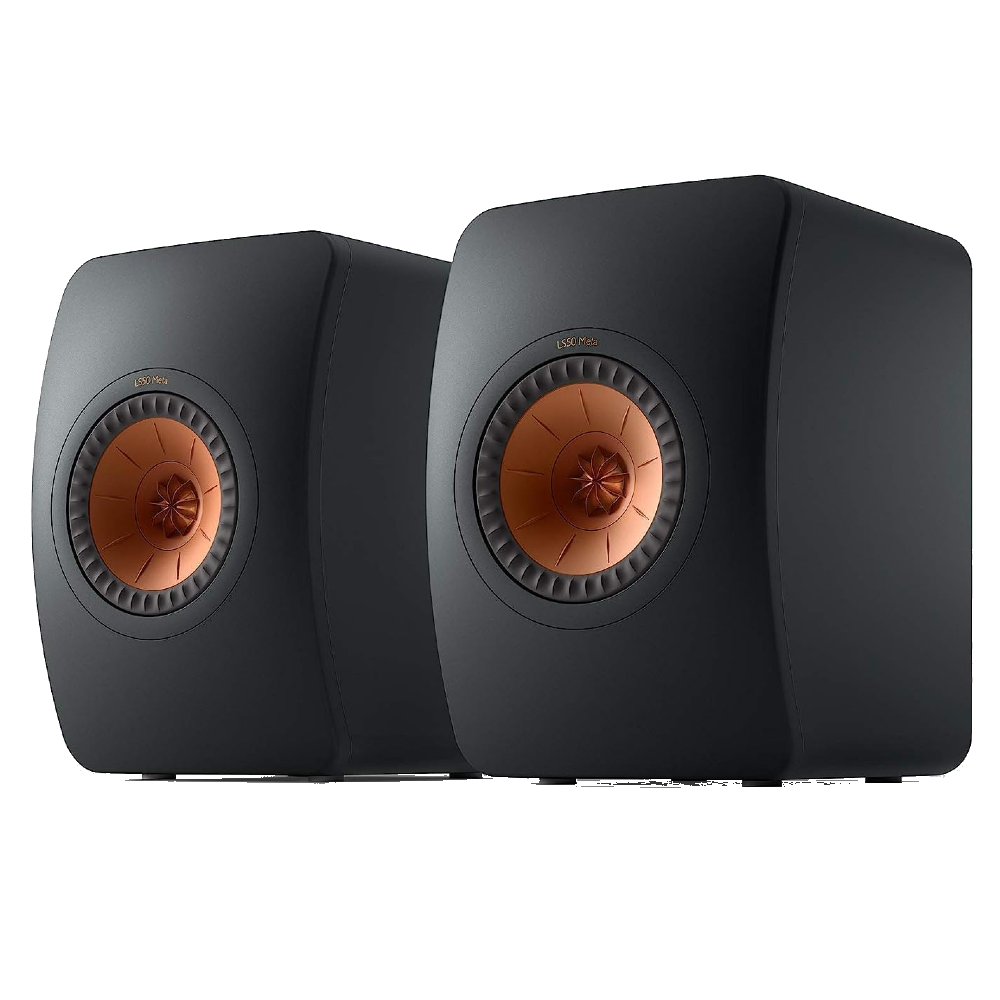

Best Bookshelf Speakers Overall
KEF LS50 Meta
They’re not cheap, but pair the KEF LS50 Meta speakers with a suitable amplifier or A/V receiver, and you’ve just taken a shortcut to audio heaven.
Best Budget Bookshelf Speakers: KEF Q150
|
Pros |
Cons |
|---|---|
|
Affordable with good treble-bass range |
Requires a separate amp or receiver |
|
Up to 200W output |
|
|
Still sounds great at lower volumes |
|
|
Improved design with back ports |
When you hear “budget speaker,” you might think of a harsh or tinny sound, but that’s not the case here. The KEF Q150 may be affordable, but they’re far from “cheap.” In fact, they look just as good as they sound.
The Q150 is the latest in KEF’s Q-series lineup. It features a newly designed cabinet with a premium finish and an upgraded 5.25-inch Uni-Q driver array. This upgrade gives smoother, more balanced transitions between treble and bass, delivering a fuller, richer sound.
One notable change is the relocation of the front port to the back, which not only improves cable management and aesthetics but also cuts down on midrange leakage and reduces port noise. You’ll also experience less low-frequency compression, making the sound even clearer.
KEF has also made improvements internally. The Uni-Q driver is now centered in the cabinet, which helps reduce unwanted resonance and enhance sound clarity and quality.
These are passive speakers, so you’ll need an amp or A/V receiver (between 10 and 100W) to power them. While they’re not the loudest, at 200W, they’re perfect for filling a medium-sized room with rich sound—whether you’re watching a movie like Dune or just chilling with your favorite playlist.
With a 47Hz rating, they’re also great for lower-volume listening. Some speakers lose their depth when you turn the volume down, but the Q150s keep the music’s full range intact. You can pair them with the KEF Q250c center channel for a home theater setup or go for the KEF Q150 + Q250C bundle.
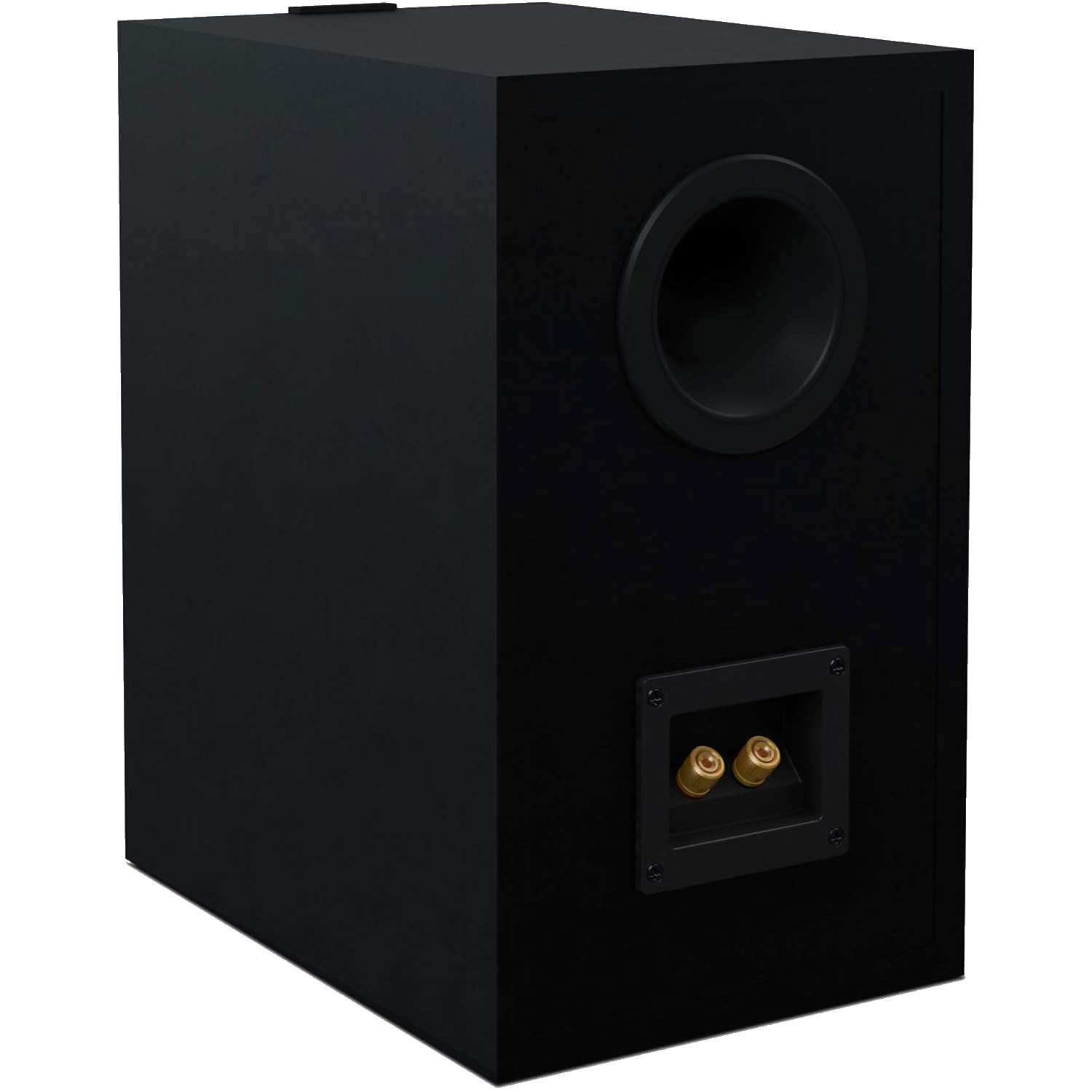

Best Budget Bookshelf Speakers
KEF Q150 Bookshelf Speakers
The KEF Q150 bookshelf speakers feature 1 single-inch aluminum dome tweeters, 5.25-inch aluminum woofers, and premium aluminum casings, and are affordable.
Best Bluetooth Bookshelf Speakers: Fluance Ai61
|
Pros |
Cons |
|---|---|
|
Natural-sounding highs and deep bass |
Bass can be lacking without a subwoofer |
|
Bluetooth 5.0 and plenty of digital and analog inputs |
|
|
Adjustable EQ |
|
|
120-watt internal amplifier |
There’s a significant difference between a good pair of Bluetooth bookshelf speakers and “just” a Bluetooth speaker. The Fluance Ai61 pair is a perfect example, with great sound and an impressive list of features.
The Fluance Ai61 speakers pair a 6.5-inch woven glass fiber driver with 1-inch neodymium soft dome tweeters. To power these, the pair uses an internal 120-watt class D amplifier. Fluance combines these elements with robust internal bracing for precision sound.
While these speakers feature Bluetooth 5.0 wireless connectivity, that’s just where it begins. They also have a TOSLINK optical digital input and a USB-C audio input. That’s not something you often see, even on more expensive speakers.
The Fluance Ai61 speakers also feature an analog RCA input and a 3.5mm output that you can use to attach an external subwoofer. To switch inputs, you even get a remote, another feature you won’t always get with powered bookshelf speakers.
The speaker pair features an internal digital signal processing (DSP) chip that allows you to EQ the speakers. Being able to do this without any additional software or settings on your playback device is helpful if you listen to different genres that may benefit from different EQ curves.
The Fluance Ai61 speakers are available in Black Ash as well as Lucky Bamboo, Natural Walnut, and White Walnut.
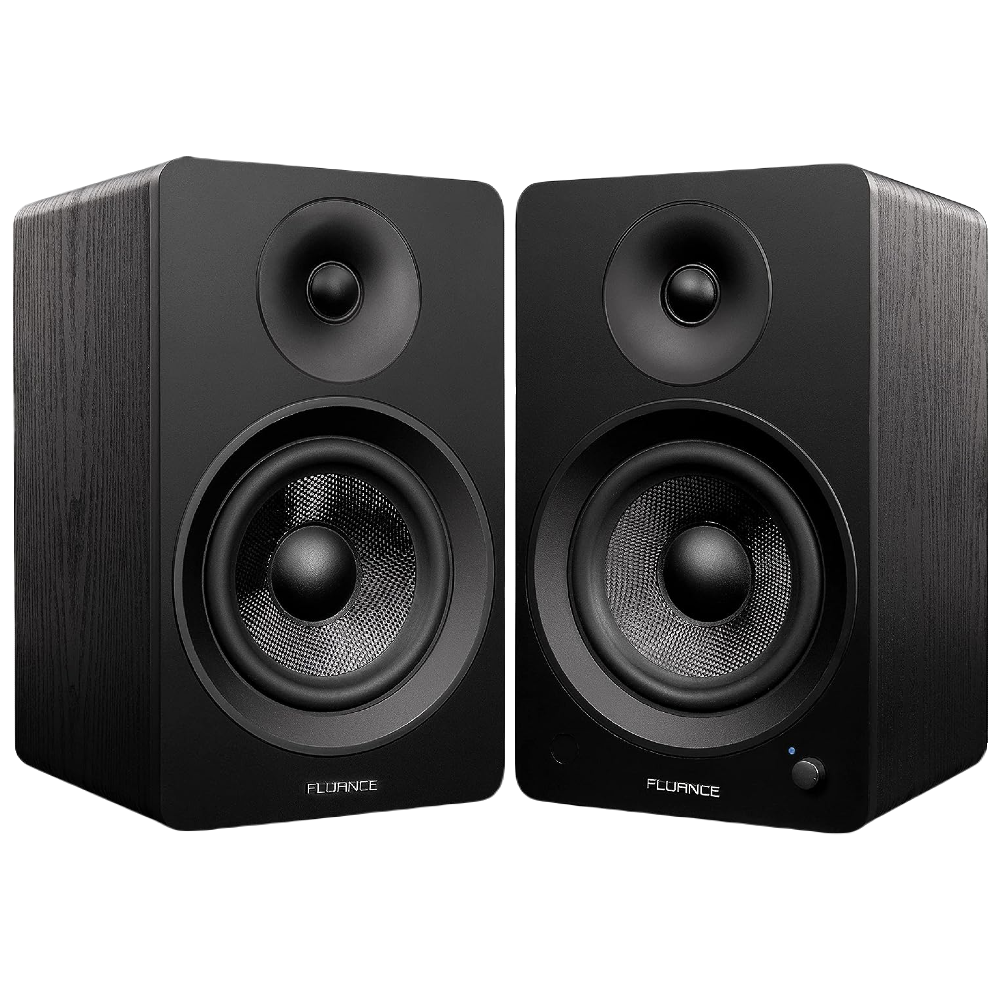

Best Bluetooth Bookshelf Speakers
Fluance Ai61
The Fluance Ai61 speakers combine the convenience of Bluetooth with the company’s fantastic sound and a host of other options to connect your audio gear.
|
Pros |
Cons |
|---|---|
|
Bluetooth 5.0 with aptX for better sound |
No subwoofer output |
|
Bass and treble knobs make dialing EQ easy |
|
|
Rich bass for the small driver size |
|
|
Hi-res audio certified |
Whether you’re hooking up a second audio system or are just a fan of simplicity, there are plenty of reasons you might not want an A/V receiver or amplifier. If you’re looking for powered speakers that can handle anything you throw at them, the Edifier S1000MKII speakers are a fantastic option.
These are slightly smaller than the majority of speakers on this list. Each speaker has a 5.5-inch midrange driver and a 1-inch tweeter. They are powered by a pair of internal amplifiers that pump 120 watts into 60 watts per channel.
The class D amplifiers in these speakers are ready for hi-res audio, with support for 24-bit/192hKz playback. These amplifiers use a high PWM frequency, which results in low overall noise.
These speakers feature ample connectivity options, with Bluetooth 5.0 at the center. The Edifier S1000MKII pair supports the aptX HD codec, so if you’re playing audio from a compatible device like an Android phone, you’re getting a higher-quality Bluetooth signal.
If you’d prefer to connect the old-fashioned way, you’ve got plenty of options. The speakers feature both coaxial and optical digital audio inputs, as well as a pair of RCA line inputs. You also get onboard EQ via bass and treble knobs, plus a wireless remote.
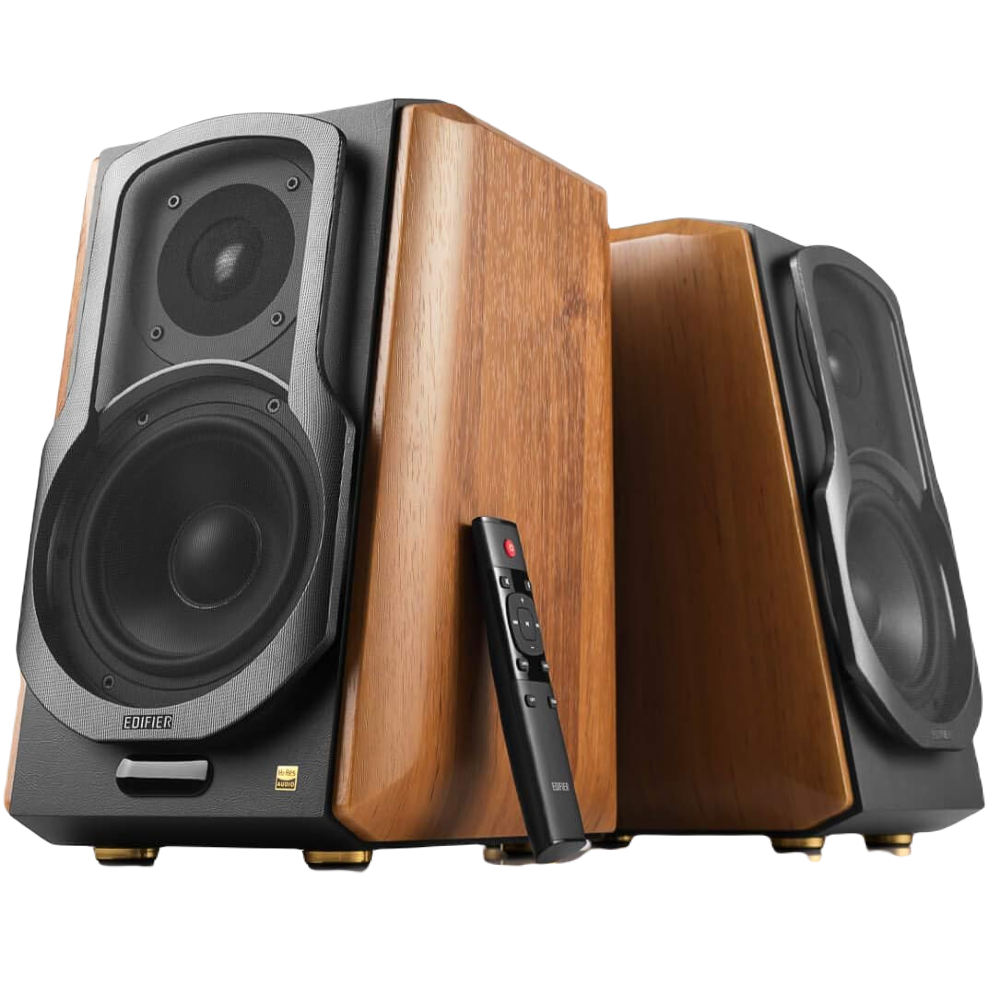

Best Powered Bookshelf Speakers
Edifier S1000MKII
If you’re looking for powered speakers that will play everything you throw them, from digital to analog, without complaining, look no further than the Edifier S1000MKII speakers.
Best Small Bookshelf Speakers: Audioengine A2+
|
Pros |
Cons |
|---|---|
|
Great sound for the small size |
Accessories can be expensive |
|
Small footprint makes them fit anywhere |
|
|
Plenty of wired and wireless connectivity |
|
|
Subwoofer output |
While bookshelf speakers are a space-saving alternative to massive floor-standing speakers, they still take up a fair amount of space. If you’re looking for something with less of a footprint but don’t want to sacrifice sound quality, consider the small but big-sounding Audioengine A2+ speakers.
These speakers stand six inches tall and feature comparatively small 2.75-inch aramid fiber woofers and 3/4-inch silk dome tweeters. However, they’re still fairly powerful, with the 60-watt amplifier pushing 30 watts per channel into the drivers.
Looking at connectivity, the Audioengine A2+ features Bluetooth with aptX and a range of up to 100 feet. New in the “plus” version is a USB-C audio input, which is handy if you’re using these as computer speakers, where we picked them as our favorite.
Don’t worry if you’re looking to hook up your analog gear. You get a pair of analog RCA inputs plus a subwoofer output. If you’re looking to get serious bass with speakers this small, you need at least a small subwoofer, which is a key feature.
Don’t worry about leaving the Audioengine A2+ speakers on for long periods. They feature a built-in idle mode that activates whenever you’re not playing music. This means that even though they’re turned on, they’re not drawing power.
The Audioengine A2+ speakers are available in Black, Red, and White.
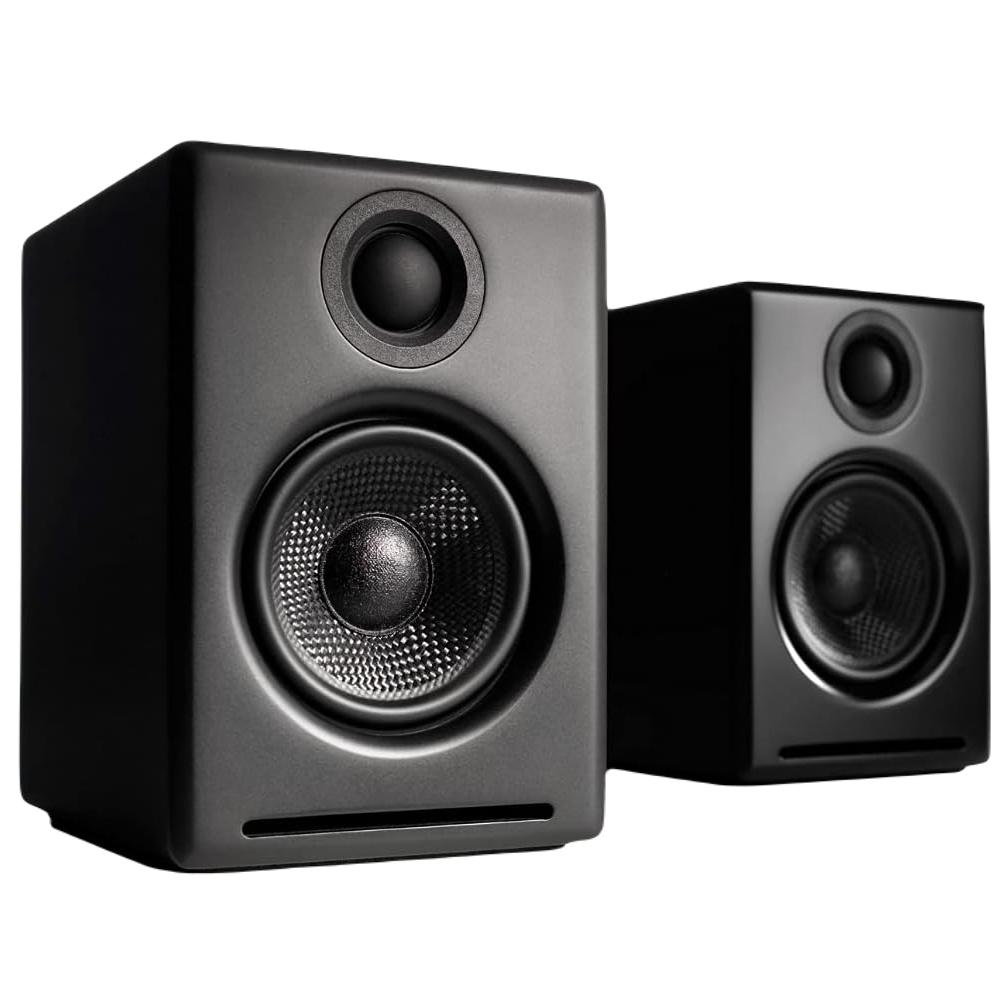

Best Small Bookshelf Speakers
Audioengine A2+
They may have a small footprint, but you’re not sacrificing sound quality with the Audioengine A2+ speakers. Plus, you’ve got options to connect any device you wish.
|
Pros |
Cons |
|---|---|
|
Simple setup and operation |
Top-mounted controls aren’t for everyone |
|
Excellent sound quality for the size |
|
|
Plenty of inputs |
|
|
Removable magnetic grilles look great |
Turntables are great, but if you’re used to the convenience of other types of listening, setting up an amp or receiver can seem like overkill. The perfect solution is a set of powered speakers like the Klipsch The Fives Powered Speaker System. You can plug in your turntable, stream from your phone, and even connect them to your TV, all without an external amp or receiver.
The Klipsch The Fives has a sharp, clean-looking exterior with removable magnetic grilles, but all the important connections are on the back. The RCA jack on the back is labeled as “phono,” so you should be able to plug in a turntable without the need for an external preamp. You also get an auxiliary input, a digital optical input, and USB and HDMI input.
You’d think because of the “Fives” in the name, the woofers would be five-inch, and they’re close, but they’re 4.5-inch drivers. 1-inch titanium tweeters accompany these for a crisp high-end. A rear-firing port adds some extra bass heft.
There are two top-mounted control rotary dials: one for volume and the other for source selection. These are useful, but you’ll need to turn to the included remote to control everything. Klipsch also offers additional control and support for updates via the Klipsch Connect App.
The Klipsch The Fives are available in Matte Black, with limited edition finishes available on the Klipsch website.
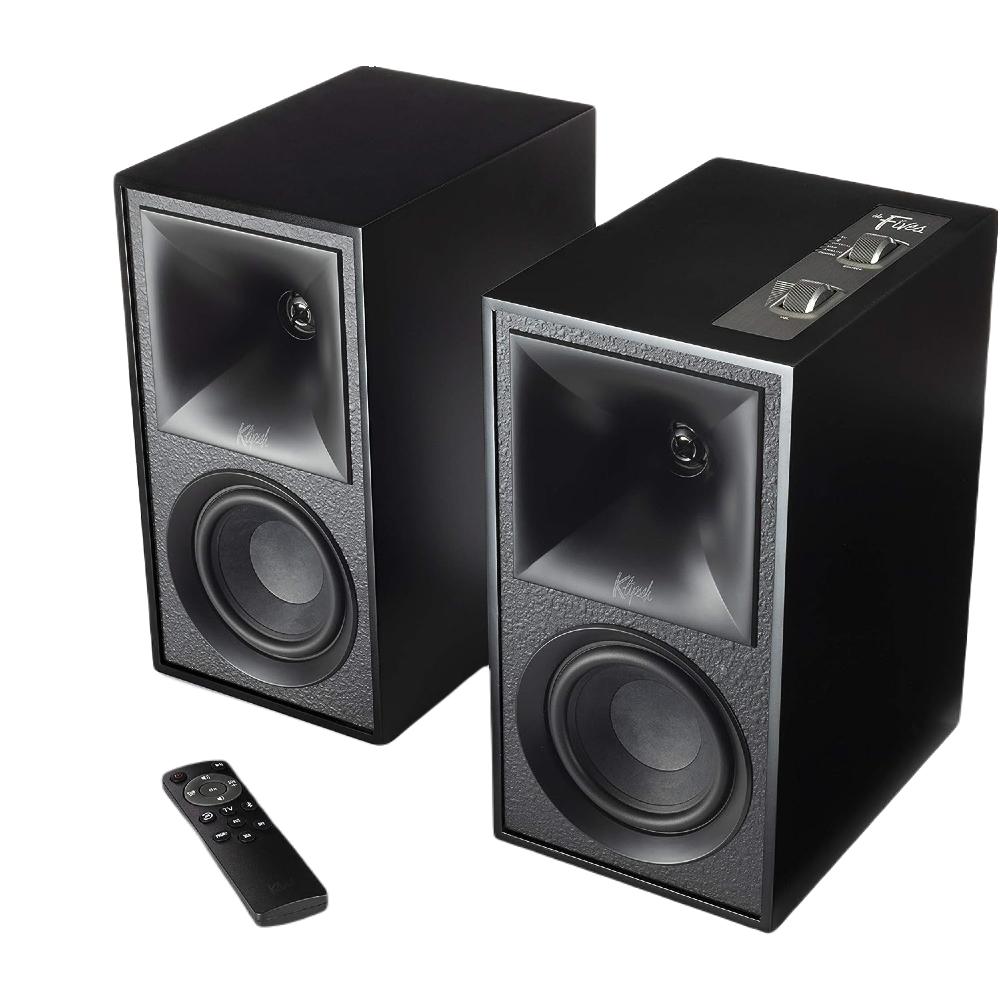

Best Bookshelf Speakers for Turntables
Klipsch The Fives
$500 $969 Save $469
Turn heads with The Fives from Klipsch, active speakers with a real wood finish and Bluetooth connectivity.

